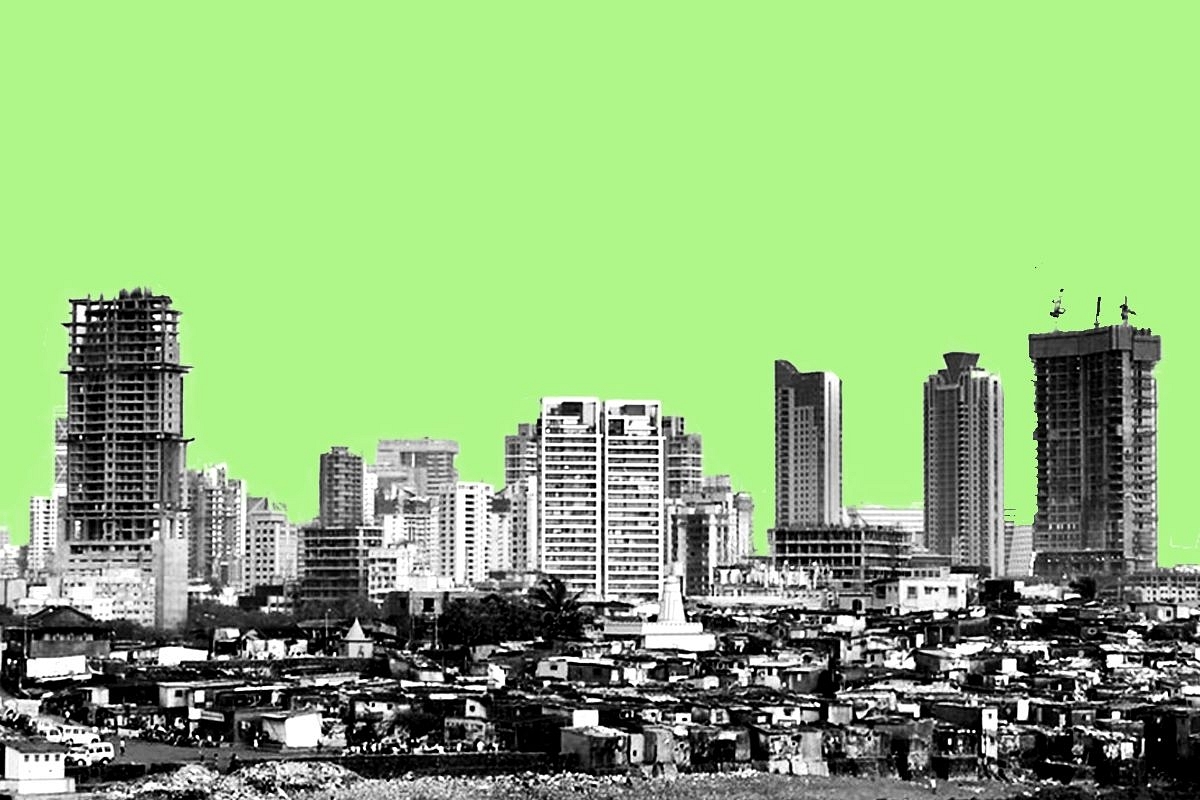Ideas
Why Covid-19 Is An Urban Health Crisis Resulting From Faulty Policy Priorities
- The case for urbanisation is strong; the case for shabby urbanisation is non-existent.
- Covid-19 has provided the challenge and the opportunity.

An urban slum.
The Covid-19 pandemic in India can be read as policy failure at multiple levels. Inadequate investment in healthcare infrastructure, over-dependence on one source (China) for bulk drugs, testing kits and personal protection equipment (PPEs), poor investment in public transport, and badly mismanaged urbanisation are some of them.
As India’s coronavirus infections soar beyond the 31,000-mark and fatalities cross 1,000, one has to see the last two failures – urban transport and mismanaged growth – as the prime contributory factors complicating our fight against the pandemic. Reversing these failures will hold the key to future growth and jobs, for urban areas are where the jobs will emerge.
Make no mistake, India’s Covid-19 story is largely an urban health crisis. It is not a national crisis, but a crisis concentrated substantially in urban areas. The semi-urban and rural areas that now show a rising graph of Covid-19 cases can largely be explained by the reverse migration of labour precipitated by the national urban lockdown.
Consider just a few numbers from big cities: Mumbai, Thane and Pune accounted for over 85 per cent of Maharashtra’s 9,318 cases as at the end of 28 April; out of 3,744 cases in Gujarat, Ahmedabad city alone accounted for more than half the total; Delhi, the nation’s capital, had 3,314 cases; Chennai in Tamil Nadu accounted for nearly a third of Tamil Nadu’s total of 2,058; Indore and Bhopal in Madhya Pradesh accounted for 80 per cent of the state’s total of 2,387 covid cases.
Even in relatively less infected Karnataka, three cities – Bengaluru, Mysuru and Belagavi – account for 55 per cent of cases.
Another statistic is worth noting: in just one slum cluster in Mumbai, Dharavi, 330 cases have been reported. This can only increase, for the chances of physical distancing are low in this congested area that has been much valourised by our poverty-wallahs.
The point one is driving at is this: India’s faulty urbanisation and poor transport infrastructure is central to understanding why Covid-19 is a big threat in India. It also points the way to what now needs to be done. It is not entirely an accident that India’s commercial and financial capital Mumbai is the country’s primary Covid-19 hub and victim.
Apart from large slums, Mumbai is one of the most congested cities in the country, with entire families even in the middle classes unable to afford proper housing. Often, two or three generations live together in single-bedroom flats in the distant suburbs.
A few facts first: if one were to look at urban-like features and not official classifications of census town, India is 55 per cent urban already, according to a World Bank study. This is why Covid-19 is an urban healthcare crisis and not a national one.
Underinvestment in housing, public transport, roads and social infrastructure has led to sprawling slums and forced travel in crowded public transport for millions of commuters not only in Mumbai, but almost all metros.
Correcting for past mistakes means reforms and investment in the following areas:
One, we have to invest more in public transport, so that some degree of physical distancing is possible during commutes. This means more buses in the short run, but metros and suburban trains in due course. Mumbai, or for that matter Delhi or Kolkata, cannot reopen for normal work without massive immediate investments in public transport.
Two, as road and public transport infrastructure are improved, cities must be allowed to grow vertically multiple-fold. This is the only way to give people more elbow room in their own houses, as raising floor space indices will reduce land prices dramatically, allowing more lower and middle class citizens to buy small homes. Urban areas are hubs of innovation, entrepreneurship and jobs because living in tight clusters enables human networking, collaboration and cross-pollination of ideas.
Three, it is time to de-valourise slum settlements. Too much has been written about Dharavi’s slums and the enterprise it has engendered. But the downside is now obvious, as hygiene is a challenge, and physical distancing almost impossible in the one-room tenements for which slumlords anyway charge high rents (Rs 5,000 monthly in some cases, or even more).
In stages, the Dharavi slum must be erased and the same people re-housed in high-rises that are well-managed by property maintenance companies for moderate monthly rents and maintenance charges. The case for allowing too many slums to fester has been demolished by Covid-19.
These investments in transport and housing will rejuvenate Mumbai, both economically and socially. So will similar programmes for other metros and mini metros. The case for urbanisation is strong; the case for shabby urbanisation is non-existent. Covid-19 has provided the challenge and the opportunity.
Introducing ElectionsHQ + 50 Ground Reports Project
The 2024 elections might seem easy to guess, but there are some important questions that shouldn't be missed.
Do freebies still sway voters? Do people prioritise infrastructure when voting? How will Punjab vote?
The answers to these questions provide great insights into where we, as a country, are headed in the years to come.
Swarajya is starting a project with an aim to do 50 solid ground stories and a smart commentary service on WhatsApp, a one-of-a-kind. We'd love your support during this election season.
Click below to contribute.
Latest